This Week In Web Design – August 20, 2021
Original Source: http://feedproxy.google.com/~r/1stwebdesigner/~3/cjSQ86iDx3Q/
…
Original Source: http://feedproxy.google.com/~r/1stwebdesigner/~3/cjSQ86iDx3Q/
…
Original Source: https://smashingmagazine.com/2021/08/automate-documentation-workflow-for-developers/
To get the most out of this tutorial, you should be familiar with: Git, GitHub and Linux and the command line.
Why Should You Care About High-Quality Documentation?
Many teams struggle with writing documentation. When you go to check a framework, the documentation will often be out of date or unclear. This can lead to internal frustration when a team member tries to add a feature, but they don’t understand how the current feature works because of poor documentation. This can lead to unproductive hours on the job.
Poor documentation also compromises a good customer experience. According to Jeff Lawson, author of Ask Your Developer and founder of Twilio, if you are selling an API as a product, documentation is the ultimate advertisement for technical stakeholders. IBM did a study on the importance of documentation, and 90% of respondents admitted that they made their purchasing decisions based on the quality of a product’s documentation.
Writing good documentation is important for the developer and customer experiences.
If Documentation Is So Important, Then Why Do Engineering Teams Deprioritize It?
Writing documentation can break developers out of the “flow”. Documentation often lives outside of the main code base, and it is cumbersome to find and update. Putting it in an Excel spreadsheet or a proprietary CMS is not uncommon.
Automating documentation and improving documentation workflow fixes this.
Automating Documentation From a High Level
What does automating documentation mean? It means adopting common software development practices. When you automate documentation, you are:
writing your documentation in Markdown;
using a continuous integration and continuous deployment (CI/CD) pipeline to run tasks such as correcting errors and deploying updates (in this tutorial, we are going to highlight GitHub Actions);
implementing tools like Vale to enforce a style guide and to correct common grammatical mistakes.
The Style Guides
Before you use tools such as Vale and GitHub Actions to automate the style guide, let’s take a moment to define what exactly is a style guide.
You know that feeling when you are writing documentation and something seems a little off? Your explanations don’t fit the rest of the documentation, but you can’t quite describe why they’re wrong. The writing explains the concept, but it doesn’t seem to fit.
When you get this feeling, your voice and tone might be off. Refining the voice and tone is a way to make writing sound cohesive even if you are developing documentation that has been edited by the QA, engineering, and product teams. Below is an example style guide from the city bus application TAPP, taken from the book Strategic Writing for UX by Torrey Podmajersky.

TAPP is a transit application (for buses and trains). The header of the table announces TAPP’s values as a company, being efficient, trustworthy, and accessible. The left side of the table lists the different parts covered by the style guide: concepts, vocabulary, verbosity, grammar, and punctuation.
Together, these make a style guide. The header introduces the values, and the left side of the table shows the different components that you would find in any written material: vocabulary, grammar, and punctuation. The beauty of this style guide is that engineers and copywriters will clearly know what capitalization to use and which punctuation to use in order to promote Tapp’s brand identity.
Technical Writing Style Guide
Not all style guides come in tables. Microsoft has a whole website that serves as a comprehensive guide, covering everything from acronyms to bias-free communication to chatbots. Microsoft of course isn’t the only company that has a style guide. Google has one, too.
The Trouble With Style Guides
Style guides are a great starting point for companies that are serious about documentation. They solve a lot of the confusion that developers might have about how exactly to write about a major feature that they are pushing out.
The problem with style guides is that they add friction to the writing process. Many writers, including me, don’t bother to stop writing and look at the style guide every time they have a question. Sometimes, a style guide is cumbersome and too difficult to reference — for instance, the Microsoft Style Guide is over a thousand pages long!
Linters and CI/CD for Documentation
If you are a programmer, then you are probably familiar with linters. Linters are an ideal way to enforce coding standards on your team. The same is true with documentation. When you create a linter, you are setting a benchmark of quality for your documentation. In this tutorial, we are going to use the Vale linter.
Using some sort of documentation automation alongside a linter is common. When we say automation in this context, we’re referring to the continuous integration and continuous deployment (CI/CD) workflow. CI automates the building and testing of documentation. CD automates the release of code.
You can use many different types of apps to implement a CI/CD workflow. In this tutorial, we are going to use GitHub Actions to run our documentation linter. GitHub Actions run CI directly in a GitHub repository, so there is no need to use a third-party application, such as CircleCI or Travis.
Finally, GitHub Actions are event-driven, which means they are triggered when something happens, such as when someone writes a pull request or an issue. In our example, a GitHub action will occur when someone pushes changes to their main branch.
GitHub Actions
First, create a GitHub repository. Then, locally, create a folder and cd into it.
mkdir automated-docs
cd automated-docs
Once you are in the folder, initialize the directory for Git.
git init
Once you have initialized the repository, proceed to create a workflow directory to your folder.
mkdir .github/ && cd .github/ && mkdir workflows/ && cd workflows/
Workflows are where we will store all of our GitHub actions. Once you’ve created a workflows folder, make a new workflow. We are going to name this workflow vale.yml.
touch vale.yml
Vale.yml is a YAML file. In this workflow file, we will include actions and jobs.
Now, open vale.yml in your favorite text editor.
nano vale.yml
Copy and paste the following into vale.yml, and let’s go over the context and syntax.
# This is a basic workflow to help you get started with Actions
name: CI
# Controls when the workflow will run
on:
# Triggers the workflow on push or pull request events but only for the main branch
push:
branches: [ main ]
pull_request:
branches: [ main ]
# Allows you to run this workflow manually from the Actions tab
workflow_dispatch:
# A workflow run is made up of one or more jobs that can run sequentially or in parallel
jobs:
# This workflow contains a single job called “build”
build:
# The type of runner that the job will run on
runs-on: ubuntu-latest
# Steps represent a sequence of tasks that will be executed as part of the job
steps:
# Checks-out your repository under $GITHUB_WORKSPACE, so your job can access it
– uses: actions/checkout@v2
# Runs a single command using the runners shell
– name: Run a one-line script
run: echo Hello, world!
# Runs a set of commands using the runners shell
– name: Run a multi-line script
run: |
echo Add other actions to build,
echo test, and deploy your project.
env:
GITHUB_TOKEN: ${{secrets.GITHUB_TOKEN}}
name
This is the name, or what we are calling our workflow. It is a string.
on
This controls the workflow and the triggers.
jobs
This is where we set up and control our actions. We select the environment where our actions will run — it is usually a good bet to go with Ubuntu. And this is where we will add our actions.
GitHub has a guide on all of the other workflow syntax and variables, in case you’re curious.
In this section, we have:
learned what GitHub actions are,
created our first GitHub workflow,
identified the most important parts of a GitHub workflow YAML file.
Next, we are going to customize our GitHub workflow to use Vale.
Set Up Vale in GitHub Actions File
Once we’ve copied the base workflow file, it is time to customize it, so that we can start using Vale actions. The first thing to do is change the name of the YAML file to Docs-Linting.
# This is a basic workflow to help you get started with Actions.
name: Docs-Linting
Next, we want to run the Vale test once someone has pushed their changes to the main branch on GitHub. We don’t want the test to run when someone creates a pull request, so we’ll delete that part of the YAML file.
on:
# Triggers the workflow on push or pull request events but only for the main branch
push:
branches: [ main ]
The jobs section is the main part of the workflow file, and it is responsible for running the GitHub actions.
jobs:
build:
runs-on: ubuntu-latest
steps:
– name: Checkout
uses: actions/checkout@master
These actions are going to run on the latest version of Ubuntu. The Checkout action checks out the repository in order for the GitHub workflow to access it.
Now it is time to add a Vale action to our GitHub workflow.
– name: Vale
uses: errata-ai/vale-action@v1.4.2
with:
debug: true
styles: |
https://github.com/errata-ai/write-good/releases/latest/download/write-good.zip
https://github.com/errata-ai/Microsoft/releases/latest/download/Microsoft.zip
env:
GITHUB_TOKEN: ${{secrets.GITHUB_TOKEN}}
We have named our action Vale. The uses variable shows which version of Vale we’re going to implement — ideally, we should use the most recent version. In the with variable, we set debug to true.
The styles section gives us the option to add a style guide to Vale. In this example, we are going to use write-good and Microsoft’s official style guide. Keep in mind that we can use other style guides as well.
The final part of this GitHub action is env. In order to run this GitHub action, we need to include a secret token.
This is what the result should look like:
# This is a basic workflow to help you get started with Actions.
name: Docs-Linting
# Controls when the action will run.
on:
# Triggers the workflow on push or pull request events but only for the main branch
push:
branches: [ main ]
# Allows you to run this workflow manually from the Actions tab
workflow_dispatch:
jobs:
prose:
runs-on: ubuntu-latest
steps:
– name: Checkout
uses: actions/checkout@master
– name: Vale
uses: errata-ai/vale-action@v1.4.2
with:
debug: true
styles: |
https://github.com/errata-ai/write-good/releases/latest/download/write-good.zip
https://github.com/errata-ai/Microsoft/releases/latest/download/Microsoft.zip
env:
GITHUB_TOKEN: ${{secrets.GITHUB_TOKEN}}
Once you’ve finished making changes, save the file, commit to Git, and push your changes to GitHub.
git add .github/workflows/vale.yml
git commit -m “Added github repo to project”
git push -u origin main
To recap, in this section, we have:
triggered the action to occur when we push new code to the main branch;
added a Vale action, setting debug to true and identifying style guides;
added a GitHub token;
committed changes and pushed to GitHub.
In the next section, we are going to create a Vale configuration file.
Setting Up Vale Configuration File
Go to the root of your project’s directory, and then touch .vale.ini. Open .vale.ini in a text editor. Copy and paste the following into .vale.ini:
StylesPath = .github/styles
MinAlertLevel = warning
[formats]
Markdown = markdown
[*.md]
BasedOnStyles = write-good, Microsoft
StylesPath = .github/styles
The StylesPath gives the path of the Vale styles.
MinAlertLevel = warning
The minimum alert level shows the scale of severity in alerts. The options are suggestion, warning, and error.
[formats]
Markdown = markdown sets the format as Markdown.
[*.md]
The configuration BasedOnStyles = write-good, Microsoft will run write-good and the Microsoft style guide on all Markdown files ending with .md.
This set-up is the bare minimum. If you are interested in learning more about configuring Vale, head over to the documentation.
When you are finished making changes, save the file, and commit and push to GitHub.
git add .vale.ini
git commit -m “Added Vale config file”
git push -u origin main
In this part, we’ve learned the internals of a Vale configuration file. Now it’s time to create sample documentation.
Creating Documentation and Triggering the Vale GitHub Actions
Now it is time to see Vale and GitHub Actions in action! We are going to create a Markdown file and fill it with text. And we are going to get our text from DeLorean Ipsum.
Go to the root of your project, and then touch getting-started.md. Once you’ve created the getting-started file, go to DeLorean Ipsum and create some dummy text for your documentation. Then, return to your text editor and paste the text in getting-started-md.
# Getting Started Guide
I can’t play. It’s my dad. They’re late. My experiment worked. They’re all exactly twenty-five minutes slow. Marty, this may seem a little foreward, but I was wondering if you would ask me to the Enchantment Under The Sea Dance on Saturday. Well, they’re your parents, you must know them. What are their common interests, what do they like to do together?
Okay. Are you okay? Whoa, wait, Doc. What, well you mean like a date? I don’t wanna see you in here again.
No, Biff, you leave her alone. Jesus, George, it’s a wonder I was ever born. Hey, hey, keep rolling, keep rolling there. No, no, no, no, this sucker’s electrical. But I need a nuclear reaction to generate the one point twenty-one gigawatts of electricity that I need. I swiped it from the old lady’s liquor cabinet. You know Marty, you look so familiar, do I know your mother?
Save the file, commit it, and push it to GitHub.
git add getting-started.md
git commit -m “first draft”
git push -u origin main
Once you’ve pushed the changes, head over to GitHub where your repository is located. Go to the Actions tab.

You will see all of your workflows on the left side. We have only one, named Docs-Linting, the same name we put in the vale.yml file.

When we push the documentation to GitHub, we will trigger the action.

If the action has run without any problems, we will get a green checkmark.

Click on “Added docs” to get a full report.

You will see that we got 11 warnings. Let’s deal with the “weasel word” warning. Go back to the text editor, open getting-started.md, and delete the word “exactly”.
# Getting Started Guide
I can’t play. It’s my dad. They’re late. My experiment worked. They’re all twenty-five minutes slow. Marty, this may seem a little foreward, but I was wondering if you would ask me to the Enchantment Under The Sea Dance on Saturday. Well, they’re your parents, you must know them. What are their common interests, what do they like to do together?
Okay. Are you okay? Whoa, wait, Doc. What, well you mean like a date? I don’t wanna see you in here again.
No, Biff, you leave her alone. Jesus, George, it’s a wonder I was ever born. Hey, hey, keep rolling, keep rolling there. No, no, no, no, this sucker’s electrical. But I need a nuclear reaction to generate the one point twenty-one gigawatts of electricity that I need. I swiped it from the old lady’s liquor cabinet. You know Marty, you look so familiar, do I know your mother?
Save the changes, commit it to Git, and push the new version of the file to GitHub. It should trigger the GitHub action.

If we click on “Deleted the weasel word”, we will see that we have only 10 warnings now, and the “weasel word” warning is gone. Hooray!

We are finished, and we’ve covered a lot of ground. In this section, we have:
added documentation to our Vale GitHub Actions repository,
triggered the Vale GitHub action,
corrected an error produced by Vale and pushed the change back to GitHub.
Conclusion
In a world that is increasingly going remote, prioritizing good documentation and good documentation workflow is important. You first have to define what “good” is by creating a style guide. Once you’ve figured out the rules of your documentation, then it’s time to automate.
Documentation should be treated like your code base: a living body of work that is constantly being iterated and becoming a bit better than the last time you updated it.
Original Source: https://www.hongkiat.com/blog/facebook-business-page-tips/
Your Facebook fan page is more powerful than you think. It can help boost revenue and brand awareness which can solidify your standing in the market. If you are selling your services, digital or…
Visit hongkiat.com for full content.
Original Source: http://feedproxy.google.com/~r/CreativeBloq/~3/iFXEFLLyDsI/draw-with-trackpad
This promises hours of fun.
Original Source: http://feedproxy.google.com/~r/tympanus/~3/7DmigBq5OzM/

Inspirational Website of the Week: Kookslams Hard Seltzer
A very fresh design with great summer vibes and lots of fun details. Our pick this week!
Get inspired

This content is sponsored via Syndicate Ads
Seamless creation from concept to production with Editor X
Create dynamic and powerful web experiences with responsive CSS combined with smooth drag & drop.
Check it out

Smooth and simple page transitions with the shared element transition API
Learn how to use shared element transitions in this article by Jake Archibald.
Check it out

CSS accent-color
Learn how to bring your brand color to built-in HTML form inputs with one line of code.
Check it out

Breaking the web forward
A sobering article by Peter-Paul Koch on the current lamentable state of browsers and the web where “[c]omplex systems and arrogant priests rule”.
Read it

Practical Uses of CSS Math Functions: calc, clamp, min, max
Review the four best supported CSS math functions, and see how they can be used in both practical and unexpected ways, such as within gradients and color functions and in combination with CSS custom properties. By Stephanie Eckles.
Read it

Building a Cool Front End Thing Generator
John Polacek shows how building a tool that can generate some cool front-end magic can help you learn something new, develop your skills and maybe even get you a little notoriety.
Read it

A guide to designing accessible, WCAG-compliant focus indicators
A helpful reference aimed at both designers who want to learn about accessibility considerations for designing focus indicators, as well as developers who want to implement them. By Sara Soueidan.
Read it

Why lab and field data can be different (and what to do about it)
Learn why tools that monitor Core Web Vitals metrics may report different numbers, and how to interpret those differences. By Philip Walton.
Read it

Responsive CSS Food Truck
An amazing demo by Adam Kuhn!
Check it out

Star Rating: An SVG Solution
An exploration of how to implement a star rating with SVG that includes half a star.
Read it

GSAP + React, First Steps & Handy Techniques
Get started using GSAP in React to build fast, powerful JavaScript animations that work everywhere.
Read it

Improving responsiveness in text inputs
Nolan Lawson explains how to make slow inputs faster.
Read it

Introducing MIDIVal: the easiest way to interact with MIDI in your browser
Kacper Kula introduces MIDIVal, a platform-agnostic library for all your MIDI needs.
Read it

Akari 1A • Pure CSS • repeating-radial-gradient
Aris Acoba made this beautiful demo using some cool gradients.
Check it out

Building a switch component
A foundational overview by Adam Argyle of how to build a responsive and accessible switch component.
Read it

Sentence Forms (not Mad Libs)
Adrian Roselli dives into sentence forms, or narrative forms and writes about their challenges.
Check it out

HTML is Not a Programming Language?
Alvaro Montoro shows that the three main arguments used for claiming that HTML is not a programming language are flawed or incorrect.
Read it

CSS Pencil
Very nice CSS only work by Kass.
Check it out

MSI – The Match Maker
Supercool web game design: match with a similar player and test your skills in a series of mini games.
Check it out

CSS Drummer
An animated CSS drummer made by Deren.
Check it out

CSS Grid tooling in DevTools
Changhao Han shows how to use CSS Grid tooling in DevTools to better understand what CSS code is doing.
Read it

From Our Blog
Create an Abstract Image Slideshow with OGL, GLSL, and GSAP
Learn how to create a WebGL-powered image slideshow animated using a single value.
Read it
The post Collective #675 appeared first on Codrops.
Original Source: https://smashingmagazine.com/2021/08/history-future-jamstack-cms/
The world’s first website was made from static HTML files created in a text editor. While it looks unassuming, it laid the foundation for the web we have today. Fast-forward 30 years, and website technology has changed significantly — we have images, stylesheets, JavaScript, streaming video, AJAX, animation, WebSockets, WebGL, rounded corners in CSS — the list goes on.
Sir Tim Berners-Lee couldn’t have possibly imagined the weird and wonderful place the world wide web would become and how deeply it would become part of our everyday lives. Yet, for all these technological developments, it’s interesting that many of us are still serving sites in the same way Tim did with the very first website — a web server serving static website files.
Throughout the web’s history, static websites have always been a popular option due to their simplicity, scalability, and security. However, unlike the early days of the web, static sites are no longer limited to developers working in a code editor. Now there’s a massive range of Jamstack CMSs available, which bring all the advantages of static sites while allowing non-technical folk to update content.
Over the years, there have been many different approaches and evolutions of static and Jamstack CMSs. In this post, we’re taking a stroll down memory lane to look at the CMSs that gave rise to the Jamstack CMSs we have today and peek beyond the horizon of what’s next.
The 90s
During the 90s, we saw two content management systems for static sites — Microsoft FrontPage in 1996 and Macromedia Dreamweaver in 1997. I vividly remember receiving a PC Magazine for my birthday with a trial of Dreamweaver. Piecing together a website using a WYSIWYG editor and seeing the code it generated was a fascinating and educational experience that sparked an initial interest in web design.
These desktop applications incremented the tooling an inch closer to the modern Jamstack content management systems of today. The idea of drag’n’dropping website components while still having control of the HTML was groundbreaking at the time.
Maintaining layouts became a particular pain point for static sites. For example, let’s say you had a website and wanted to change your navigation. You would need to make that change on every page. At this point, dynamically generated websites had already solved this problem with includes.

Dreamweaver 4 introduced editable regions, which was the first foray into separating content from the layout on a static website. Now you could manage larger sites and even hand off content editing to someone else without worrying about them breaking the rest of the site.
The bridge between local development and deployment was also a pain point Dreamweaver began to address with integrated FTP. I remember the struggle of getting my FTP configuration exactly correct in Dreamweaver for the free, advertising-ridden hosting I’d found. But, when it worked, it was magical. I had my website with funny photos and links to favorite websites live on the internet, and better yet, I could edit directly on the server.
The 00s
In the 2000s we had a showdown of two popular blog publishing platforms — MovableType in 2001 and WordPress in 2003. It was a battle of not only proprietary vs open source but also static vs dynamic. It’s safe to say WordPress, the platform now powering 40% of the internet, won that battle, but MovableType paved the way for Jamstack CMSs in the future.

MovableType was one of the first static site generators on the market, although that term wouldn’t become popular until 2008. Ben and Mena Trott created MovableType because of a “Dissatisfacion with existing blog CMSes — performance, stability.” To this day, these two points are common reasons for switching from a dynamic site to a static one.
What’s interesting is there was little mention of static sites in MoveableType’s documentation at all. Instead, they would talk about “rebuilding” the site after any changes. I imagine they wanted to avoid the limiting perception of the word ‘static.’ It’s the same problem that led the community to adopt the term ‘Jamstack.’
Before MovableType, other personal blogging platforms were available such as Geocities, Blogger & Open Diary. However, MovableType was one of the first widely available platforms you could download for free and host yourself. In addition, they introduced a hosted version of MovableType in 2003 called TypePad to compete with other popular cloud platforms.
With MovableType, you had everything you needed to manage your blog. You could create and update blog posts, all content was straight HTML — open-source WYSIWYG editors weren’t available at the time, and Markdown didn’t come about until 2004.
We can see all the bones of modern Jamstack CMSs here. MovableType really was before its time.
In 2006, Denis Defreyne tried to set up a Ruby-based blog platform and ran into performance problems — “Having a VPS with only 96 MB of RAM, any Ruby-based CMS ran extremely slowly.” One year later, Denis launches Nanoc, a static site generator that simplifies MovableType’s model. Nanoc removed the UI and is instead a program you run on the command line.
As far as I can tell, this is the first modern static site generator, although we’re still a year away from coining that term. At the time, Nanoc talked about compiling source files into HTML:
It operates on local files, and therefore does not run on the server. nanoc “compiles” the local source files into HTML by evaluating eRuby, Markdown, etc.
Nanoc had many static site generator (SSG) features we now take for granted:
Layouts
Create layout elements using Ruby’s ERB templating language.
Page Metadata
A separate YAML file for storing title and other metadata for a page. Front matter wasn’t a thing yet.
Markdown support
Write content in Markdown and transform it into HTML on build.
Templates
A feature similar to Hugo’s archetypes.
Plugins
Known as libs; extend the static site generator for your own needs.
By the end of 2008, Tom Preston-Werner announces Jekyll — a simple, blog-aware, static site generator. It took ideas from Nanoc and pushed them even further with two significant innovations:
Front matter
Instead of metadata living in a separate file, now you can have a small YAML snippet at the top of a file.
Blog aware
Create posts with Markdown files. Jekyll builds these into an array you can iterate over and paginate to create a blog.
Both Nanoc and Jekyll revolutionized the future of static site tooling in their own way. First, Nanoc introduced having a site’s configuration, layouts, and content as static files. The benefit of doing this is the entire site’s source code can live in Git. Jekyll took this a step further by providing more structure around the content. Now you could use GitHub as your CMS. Adding a new blog post is as simple as creating a new Markdown file in GitHub, writing your content, and committing.
The 10s
In 2012, Dave Cole published a post on How we build CMS free websites. The post details how Development Seed moved their websites from Drupal to Jekyll and how they use Prose.io to manage the content. Development Seed built Prose.io to make it easier for content writers to contribute to Jekyll websites.
Prose.io syncs with your GitHub repository and provides a simple GUI for everyday content tasks such as updating front matter, writing Markdown, creating posts, and uploading files. In addition, content updates save back to GitHub, creating a tight workflow between developers and content writers.

Prose turned Jekyll from a tool for developers to create blogs to a powerful content publishing platform. Moreover, it sparked a decade of companies pushing static site generator content publishing to the next level.
There are now hundreds of modern Jamstack CMSs to choose from, each with its own benefits and trade-offs. Jamstack CMSs typically take one of three approaches to manage content on a static website:
SSG/CMS package
Hailing back to MovableType, these platforms manage content and render the static site themselves. Controlling the whole stack means these CMSs can provide a tightly integrated experience. Expect live previews, straightforward setup, and strong conventions.
The downside of the SSG/CMS package is they’re bundled together. You might love the editing experience but loathe the website generation portion. It’s worth noting that you can throw away the SSG portion on some of these platforms and only use it solely as a Content API.

Examples: Statamic, Publii, WordPress (with Simply Static plugin).
Content API
These platforms provide content as a service. They offer many different field types you can use to piece together the content for your pages. On top of that, Content API platforms provide sophisticated APIs to retrieve the content.
When you run an SSG build, you download the content from the content API and interact with it like you would a data file. The nice thing about content APIs is you can reuse content across many different digital experiences. In addition to that, you can manage massive amounts of content and have deep relationships between pieces of content.
The downside is your content lives on a third party, so you’re at their mercy for any downtime, API changes, or how you interact with your content. Finally, as the editing interface is abstract from the end use-case of the content, there can be a disconnect between the fields in the Content API vs what you see rendered on a web page.
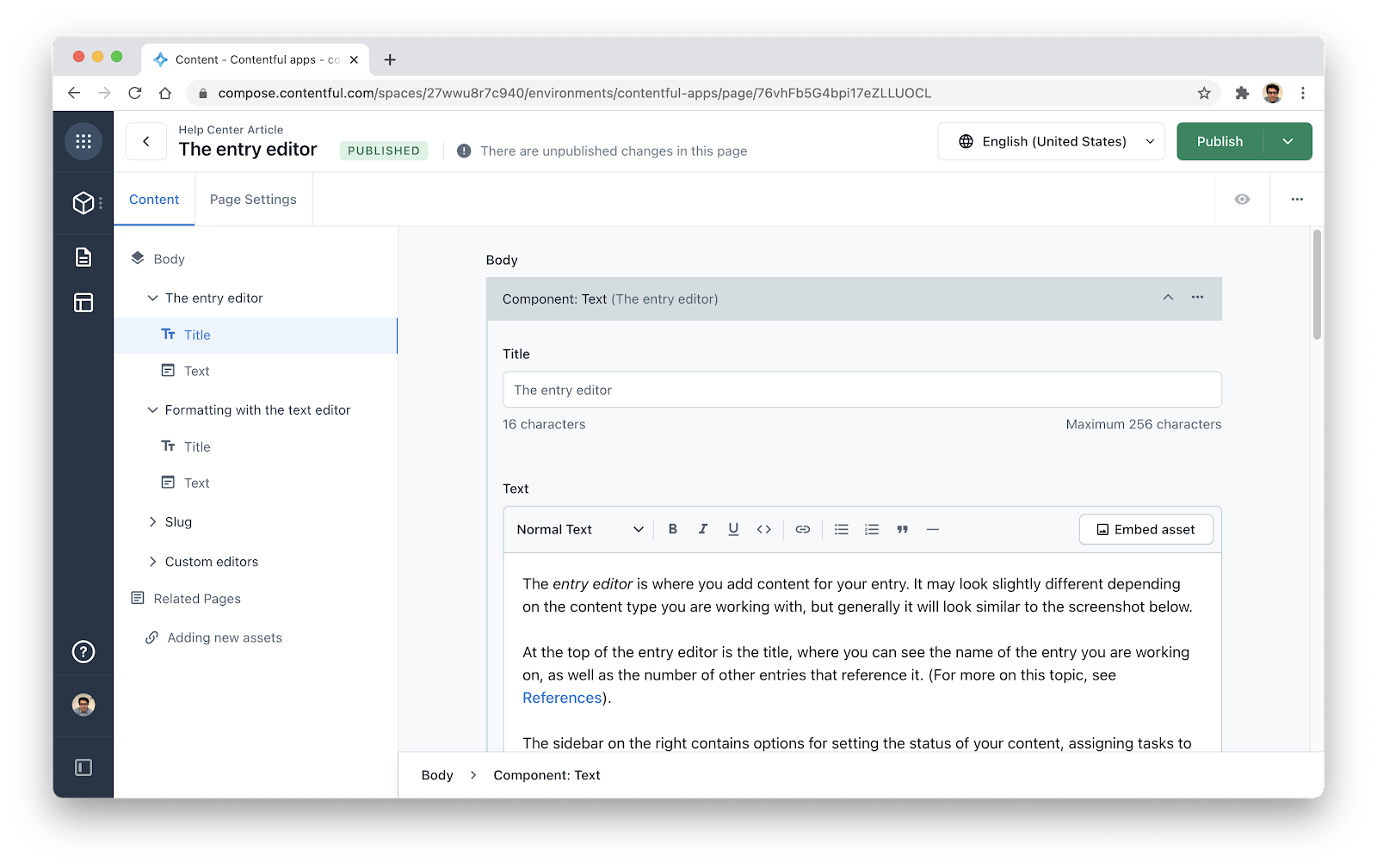
Examples: Contentful, Prismic, Strapi.
Git-Based CMS
These platforms take a similar approach to Prose.io. You connect your Git repository, they pull in your website files and create an editing interface around them. When you save changes, the files push back to your repository. The benefit of this approach is your Git repository holds your entire site and all its content.
Git based CMSs bring all the power of Git workflows to non-technical content writers. The downside is everything lives in your repository, so if you want to reuse content across multiple digital experiences, you would need to build JSON endpoints on your static site. Hosted repositories also have an upper limit of ~2GB, so you may need to use a 3rd party service for media if you have many assets.

Examples: CloudCannon (disclaimer: I’m the co-founder), Netlify CMS, Tina
Where are Jamstack CMSs today?
SSGs were originally tools for developers to build personal blogs. It was a simple approach that gave developers complete control, but you needed a basic understanding of web development to contribute to the sites. Over the past decade, the rapid evolution of Jamstack and the Jamstack CMS has helped propel Jamstack into mainstream use cases. These use cases include:
Documentation
Developers expect a lot from documentation sites, and a good experience will help win them over. Jamstack puts you on the right track to creating documentation sites developers love:
Development is rapid, and there’s more time for polish.
Markdown is an excellent format for Documentation made even easier with a good CMS.
The site will load in a snap.
The site content lives in a repository which allows the developer community to suggest improvements.
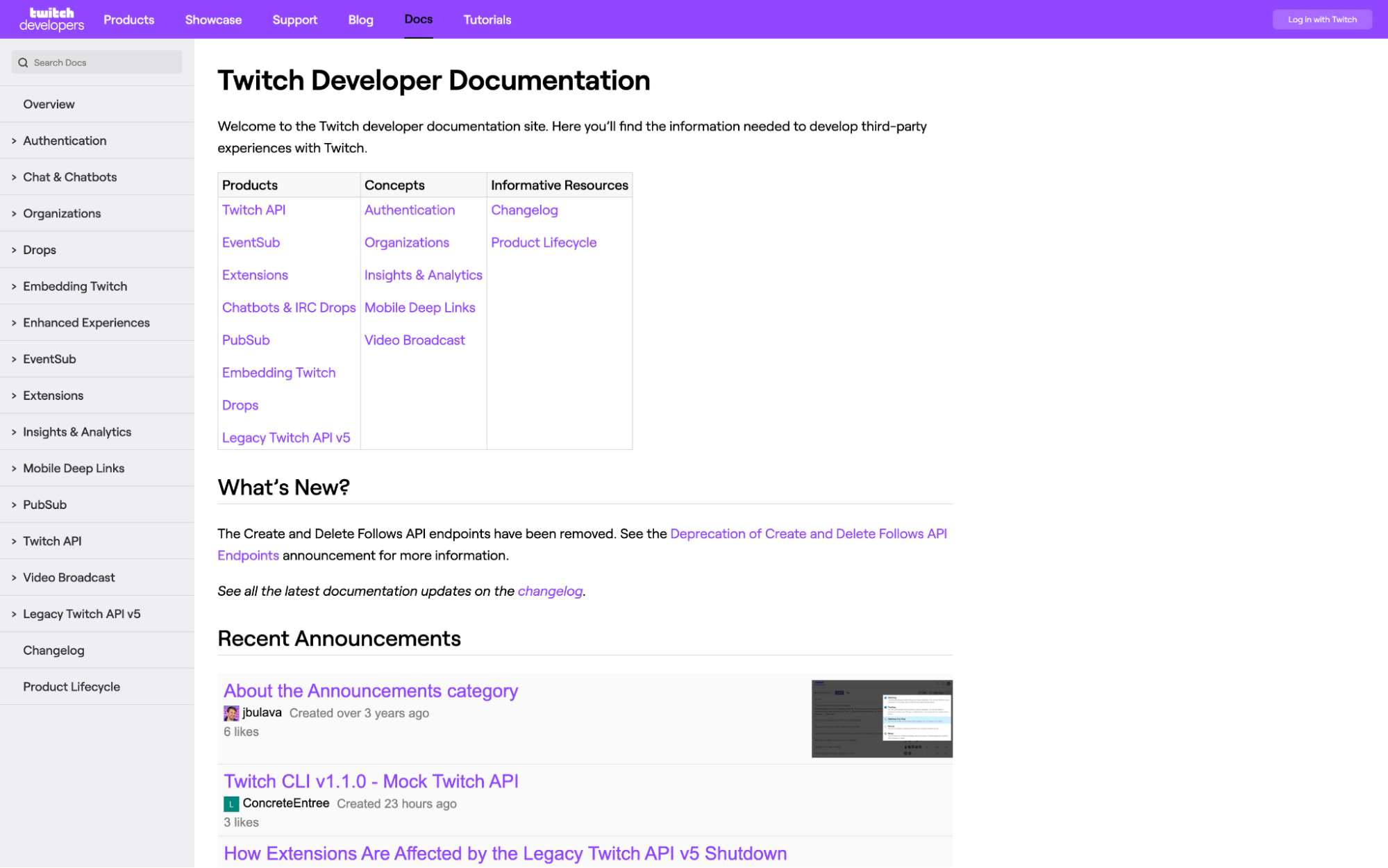
Companies including Twitch, Rackspace, and Linode are reaping the benefits of Jamstack for their documentation websites.
eCommerce
Visitors to an eCommerce site are on a path to paying money. Slow loading times or worse, downtime can make them look elsewhere. Platforms such as Snipcart, CommerceLayer, headless Shopify, and Stripe enable you to manage products in a friendly UI while taking advantage of the benefits of Jamstack:
Amazon’s famous study reported that for every 100ms in latency, they lose 1% of sales. Jamstack sites are typically among the fastest on the web.
When an eCommerce site has downtime, it can’t generate sales. There are far fewer moving parts in a Jamstack site, making them easier to keep online.
eCommerce sites are consistently iterating to improve conversion rates. Developer experience is at the heart of Jamstack, allowing developers to make and publish changes quickly.

Victoria Beckham Beauty, Teespring, and Louis Vuitton are all using Jamstack to boost their eCommerce experience.
Corporate websites
Corporate websites are the online front door to a company. Making a good impression with a fast-loading, well-constructed website can give an edge over competitors. Many of the Jamstack CMSs we’ve mentioned have the features and workflows growing enterprises require. These include translations, publishing workflows, and complex content modeling.

Netflix, Peloton, and Intercom iterate faster on their corporate websites thanks to Jamstack and Jamstack CMSs.
Large scale blogs
Static site generators often get pigeonholed as a solution for small websites. Thanks to the build speed of static site generators like Hugo and modern Jamstack CMSs designed to handle vast amounts of content, even prominent blogs like Smashing Magazine, web.dev, and JFK International Air Terminal can take advantage of a Jamstack approach.
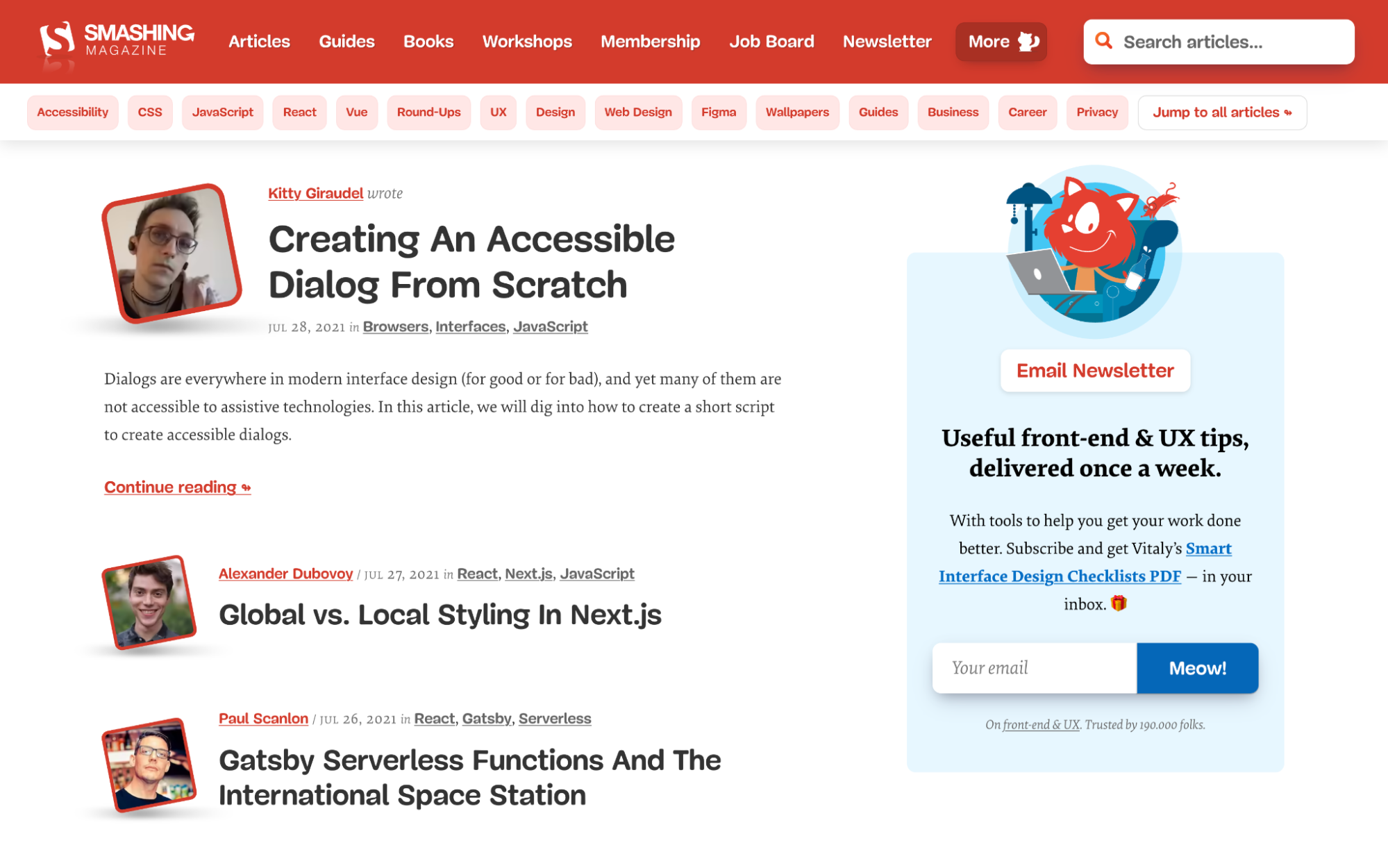
Government
What better way to promote online transparency in government than having a website where the content lives in a public repository? There’s a complete history of all changes, and citizens can suggest improvements. You really can have a government website by the people, for the people.

digital.gov, Singapore Together, and CIO.gov all have pubic repositories on GitHub, which you can browse through every change made or suggest a content update.
Client websites
Websites for clients need to be exceptionally simple to update. Jamstack CMSs with a visual editor like Storyblok, CloudCannon and Tina make it intuitive for non-technical clients to manage content on their Jamstack website.

Wilto Makes Food, Down Thyme, The Bottle Room Bar take advantage of the same Jamstack approach that world-leading companies are.
How Does The Modern Jamstack CMS Stack Up Against Other Popular CMSs?
At a high level, there are two ways of getting a website online:
You select a template, customize it to your brand and enter your content.
You work with a designer and developer to create a bespoke website.
Of course the template approach is cheaper. For under $100, you can get a high-quality theme/template and get your website online in minutes. It’s an excellent way for an individual or small business to get a website online.
A quality bespoke website is going to start at $1k and can easily get to $100k+. A unique website with custom functionality helps you stand out against a sea of millions of websites, something many companies are willing to pay for.
Squarespace, Wix And Weebly
Website builder platforms focus on the template approach. They’re going for the mass market, and provide a way for anyone to spin up a website without a developer.
There’s no question Jamstack is a developer-focused technology. When we talk about static site generators, incremental regeneration, or instant cache invalidation, it’s enough to make the layman’s eyes glaze over. I struggle to see a future where the local flower shop needs a website and chooses a Jamstack approach without developer involvement.
Even with the most intuitive content management system for Jamstack where you can select a template, drag & drop components, and inline edit content, the benefits of Jamstack for this audience over website builders are too technical. Sure, it’ll be fast, secure, and easy to edit; however, the end-user couldn’t care less whether it’s using Jekyll, Hugo, Gatsby, or a dynamic backend.
The benefits of a fast-loading website, automated DevOps, higher uptime, and faster development cycles are much more seductive to companies building bespoke web projects. In this sense I don’t see a lot of overlap between website builders and Jamstack use cases.
WordPress
WordPress has captured both workflows. Someone completely non-technical can piece together a template with various plugins and have their website online within a day. WordPress also has rich APIs that developers use to create unique, bespoke web experiences. This broad range of use cases has helped grow WordPress to power almost 40% of the internet.
In most articles about Jamstack, you’ll find a section that throws WordPress under the bus. There’s frequently talk about how WordPress is slow, insecure, and complicated. I believe it’s a more fundamental conversation of approach. We’re often talking about static vs. dynamic and monolith vs. decoupled. WordPress is the most popular CMS, so it’s often the target.
There is no Jamstack vs. WordPress. The truth is you can enjoy the benefits of Jamstack while using WordPress as your CMS. Hosting platforms like Shifter and Strattic turn your WordPress site into a static website. You can also use a plugin to output a static site or use WordPress as a headless CMS to populate content into a static site generator.
It’s also relatively straightforward to migrate from WordPress to a Jamstack CMS. For a Git CMS you’ll want to migrate the blog posts and assets to Markdown files which live with your static site generator of choice. Fortunately, many SSGs have import tools that make this easy. For a Content API CMS, some of them have a data import tool otherwise, you can always write a script to pull data from WordPress and save it to your Content API.
Webflow
Webflow is a curious one because it allows designers to create bespoke websites without developers, but it’s too technical to be considered a website builder. It’s a robust platform that certainly overlaps with some Jamstack use cases. Ultimately it’s going to come down to control.
If your requirements fit within Webflow’s capabilities, it might be a good solution for you. While it can do a lot, it has limitations that a developer can surpass. If you need a developer, taking a Jamstack approach is one of the most efficient ways to leverage your staffing resources.
Drupal
Drupal is not just a CMS. It’s a powerful framework that can solve even the most complex use cases, gearing it more towards bespoke solutions for enterprise problems rather than much smaller informational sites.
Modern Jamstack CMSs have plenty of successful case studies of these smaller websites. For the more complex enterprise use cases, we have fewer examples. There are some limitations Jamstack needs to overcome to compete with a sizeable Drupal install:
Build time
Prebuilding a site using a static site generator takes time. For a small site, a build might take a few seconds. A site with 100k pages could take upwards of an hour to build. Waiting an hour for your site to build after each change isn’t a viable development workflow.
Static site generators have several strategies to address long build times, including build caching, incremental builds, dynamic persistent rendering, and website sharding. The choice of tooling also has a significant impact on build time. For example, using a Golang based static site generator like Hugo can rapidly build large sites, whereas using something Ruby-based like Jekyll might struggle.
We don’t have a silver bullet for build time yet, but the implementations of these strategies are improving all the time, which opens up possibilities for more extensive use cases.
Dynamic functionality
Large, complex websites typically have some form of dynamic behavior. Forms, commenting, search, and custom API endpoints are all bread-and-butter for Drupal. For many developers, it’s not obvious how to do these on a Jamstack site.
There’s a huge ecosystem of tools that support Jamstack websites for everything from commenting solutions, search, contact forms, to even eCommerce.
Perhaps you don’t want to use a third party, and you need a bespoke solution. You still have options with Jamstack:
You could build a separate API your Jamstack site interacts with for any dynamic functionality.
Netlify, Vercel, CloudFlare, and AWS all have the concept of serverless functions run at edge nodes of a CDN.
Fine-grained permissions
Drupal has a rich and extendable permission system. Large sites have large teams of content editors, which require a deep permission system.
We haven’t seen the same level of deep permission systems in a Jamstack CMS as is possible with Drupal, but it’s only a matter of time. It’s a chicken-egg situation. Without large content sites with extensive content teams, we don’t need complex permission systems. When we see more large content site adoption in Jamstack, Jamstack CMSs will introduce deep permission systems to match Drupal.
20s And Beyond
Jamstack CMSs are on an exciting trajectory. However, there’s still a long road ahead to become a mainstream way for businesses to build websites. So, what are the problems we need to solve to have a broader appeal for Jamstack?
Intuitive Content Editing
Platforms like Squarespace and Webflow are known for highly intuitive content editing experiences. What could be easier than writing content directly on your website? No guesswork or previews are necessary.
Content management for the Jamstack website has drifted towards a disconnected approach. You update content on a set of abstract field components that don’t represent how that content will look on the rendered site. The advantage of this disconnection is content reuse, but you’re sacrificing the editing experience to have this flexibility. There’s no reason we can’t have an editing experience similar to Squarespace on a Jamstack website. When we do, you’ll no longer have to make editing trade-offs to reap the benefits of Jamstack.
Less Reliance On Developers
While developers are an essential part of the Jamstack, they’re often heavily involved in the content publishing process. For Jamstack to grow, we need content tools that reduce this reliance. Editors should be able to create, manage and publish content without a developer. We’re getting close to editors becoming completely self-reliant once a site is set up, but there’s still work to do.
Better Publishing Workflows
Most CMSs have basic staging/production content workflows, which work fine for simple websites. Yet, these workflows quickly become an issue as soon as you have multiple contributors. It’s the equivalent of having a team of developers trying to work on a single branch.
Git has revolutionized how developers collaborate on content. We now have workflows where independent developers from around the world can come together and build extremely high-quality software. These workflows are game-changing, so why can’t we do the same thing for content? Jamstack sites are static. They live in a repository. With the right interface, we can bring these workflows to an entirely new audience pushing content collaboration far beyond what any CMS is capable of today.
Developers review pull requests using a code diff which indicates what code has changed. In the review process, you can have conversations about particular lines of code and iterate until it’s in a good spot to merge into the main code base. In addition to this, it’s common to run a suite of status checks as part of a pull request. Status checks are small programs to lint, run tests, or anything else you’d like to measure. Code diffs and status checks are crucial tools to review source code and ensure it’s consistent and high quality. So how do we take these ideas and bring them to content management?
We can’t put code diffs in front of content editors. The whole point of a Jamstack CMS is to abstract technical concepts. We can, however, show content diffs to indicate what content changed rather than the underlying source code. Visual diffs are another option and give you a different angle. Platforms like Percy are already doing this and give you a pixel-perfect view of what has changed between two web page versions.
As for static checking on content, we already have many tools available. There’s everything from checking for broken links, missing alt tags, SEO checks, grammar checks, and accessibility checking. We need friendly interfaces on top of these tools to help non-technical editors identify and solve issues themselves. Integrating these tools and workflows into Jamstack CMSs will change the way we manage content on the web.
The Next Frontier Of Content Management
While the bones of Jamstack CMS’s have been around since the early 90s, it’s only in the past five years we’ve seen significant funding and resources propel the approach. We’re still in the early adoption of Jamstack, but I believe we’re nearing a tipping point.
The number of large-scale deployments of Jamstack by world-leading companies is growing by the day. As the tooling and platforms improve, I can only see this trend growing. It will be hard to justify not using Jamstack for a bespoke corporate website or application in the next decade.
Where do you think Jamstack CMSs will be in 2030?
Original Source: http://feedproxy.google.com/~r/abduzeedo/~3/yjQMqb4W_00/decoroom-stylish-uiux-and-web-design
Decoroom Stylish UI/UX and Web Design
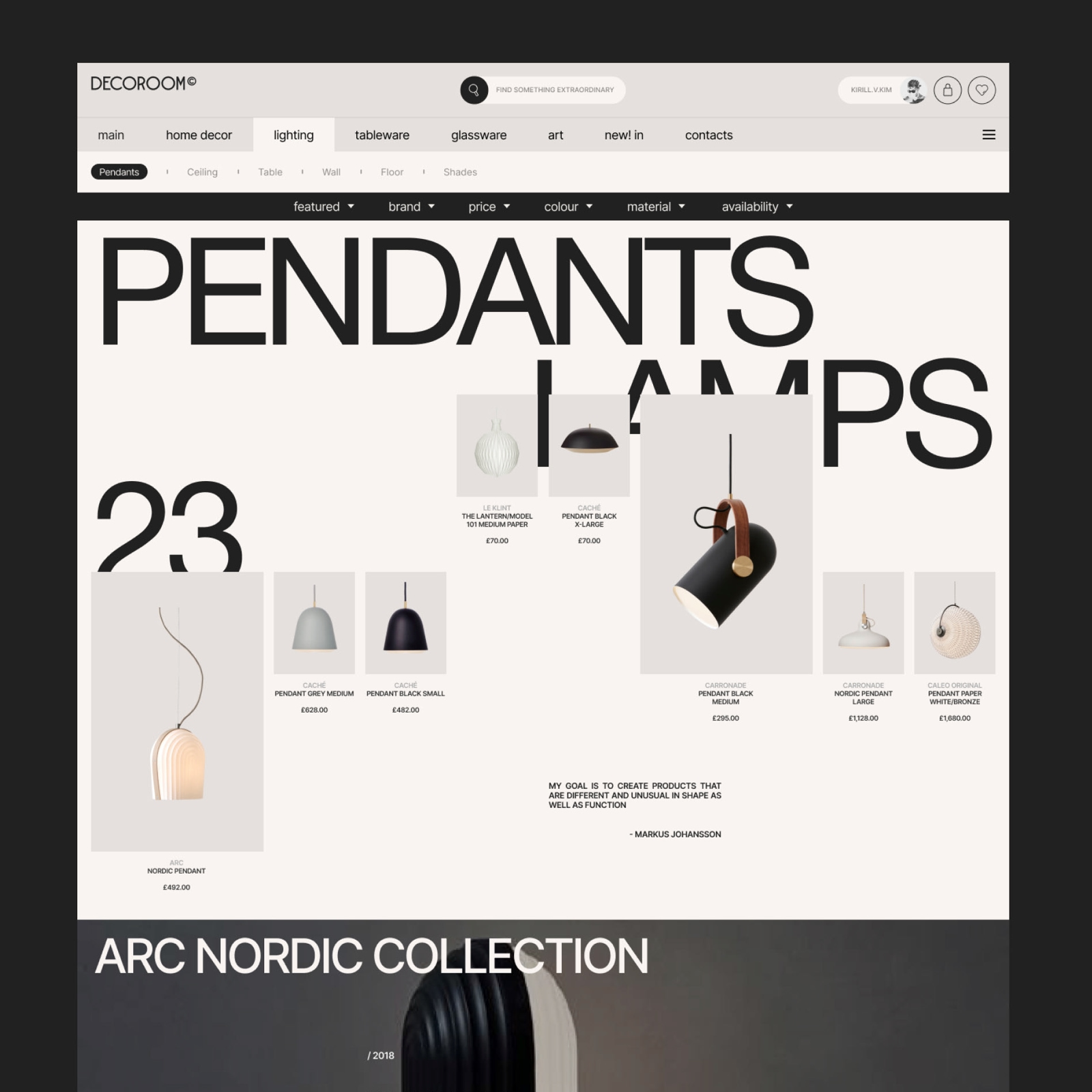
abduzeedo08.18.21
Kirill Kim shared a quite beautiful web design and UI/UX project. There’s not much information about the project created for Decoroom, however the vignettes shared highlight the minimal look, the elegant use of photography and typography with one of my favorite typefaces, Inter.
For more information make sure to follow Kirill Kim on
Behance
Dribbble
Instagram
Original Source: http://feedproxy.google.com/~r/abduzeedo/~3/aN6rUvOfKDU/brutalist-hong-kong-posters
Brutalist Hong Kong Posters

AoiroStudio08.18.21
I stumbled across this series of ‘brutalist-inspired’ posters of Hong Kong and thought it would be a great fit for a feature on abdz. With the shades of blue, red, white, and lots of textures. We are following illustrations of several iconic and controversial modernist architectural pieces in Hong Kong, built between 1950s and 1980s. One particular that strikes me is the design for the Wah Fu Estate, it’s a modern and iconic design. For more about Anthony, can you check out his site and social media feeds.
For more on Anthony Lam atelieravocado.com
Links
Behance
Instagram
Original Source: http://feedproxy.google.com/~r/1stwebdesigner/~3/mfaLl7gCIKw/
The recent pandemic has forced many businesses to go online. This has created a boom for Shopify, a popular eCommerce platform that makes it easy to open up your online store.
With hundreds of beautiful themes and apps that enhance your shoppers’ experience, Shopify has everything you need to shift your operation online and create a digital storefront for your business.
But to get started, you’ll need a solid Shopify theme and that’s what this post is all about. We’ll cover the best free and premium Shopify themes for 2021 that will allow you to launch your store as quickly as possible.
Your Web Designer Toolbox
Unlimited Downloads: 500,000+ Web Templates, Icon Sets, Themes & Design Assets
Starting at only $16.50/month!

DOWNLOAD NOW
18 Best Free And Premium Shopify Themes
Below, you’ll find an overview of the 18 best Shopify themes along with their features.
Debut Free Shopify Theme

DEMO / TRY THEME
Helas Minimal Premium Shopify Theme

The Helas theme has a clean and minimal design. It would work well for a fashion store and has a product-centered layout which makes it easy for your customers to see what you have to offer. Notable features include product carousels and labels, plenty of customization options, built-in customer reviews, wishlist support, and more.
DEMO / BUY THEME
Vintage Free Minimal Theme

The Vintage theme is a free Shopify theme that would work well with home and garden, entertainment or arts and crafts stores. The theme has a minimal design and includes features such as recommended products, stock counter, in store pickup availability indicator, and more. In addition to that, the theme is responsive and easy to use.
DEMO / TRY THE THEME
CORO – Minimal & Clean Fashion Shopify Theme

Here’s a versatile and responsive Shopify theme that can be used for any type of store. It features a minimal design and has a built-in mega menu. Notable features include automatic price changes, products’ quick view, powerful customization options, product labels, built-in product zoom, and more.
DEMO / BUY THE THEME
Narrative Free Shopify Theme

The Narrative is a free Shopify theme that would work well for stores selling only one or two products. The theme has a simple design and includes features such as hero video, customizable image blocks, quote slides, customizable navigation, wide layout, and more. On top of this, the theme looks stunning on both mobile and desktop devices.
DEMO / TRY THEME
Hikez | Trekking & Hiking Premium Shopify Theme

If you have a store that sells hiking, camping, and trekking gear, the Hikez theme is a great choice. It has a stunning grid based layout which makes it easy to organize and display your products. The theme is fully responsive and comes with awesome features such as product carousel and product comparison, 5 types of mega menus, Ajax filters, multi-currency support, and more.
DEMO / BUY THEME
Brooklyn Free Shopify Theme

If you’re looking for a free theme that was designed with apparel stores in mind, the Brooklyn theme has you covered. This theme features a modern and elegant design and has plenty of customization options. You’ll also find all the necessary features for a powerful eCommerce store such as dynamic product grid, header slideshow, slideout cart, support for video on the homepage, and more.
DEMO / TRY THE THEME
Daxone – Multipurpose Shopify Theme

The Daxone theme is a great choice for any type of store since it has a versatile and modern design. The theme is packed with features to help you sell more, including: various page layouts, prebuilt sections, plenty of customization options, popup cart, built-in newsletter form, product quick view, and more. The theme is also responsive and optimized for SEO.
DEMO / BUY THEME
Simple Free Shopify Theme

As the name implies, the Simple theme has a clean and simple layout that makes it easy to showcase your products in a modern grid layout. The theme has a sidebar menu which offers easy navigation and you’ll also find features such as product image zoom, image animations, product recommendations, and customization options. The theme is also responsive.
DEMO / TRY THEME
Ella Multipurpose Shopify Theme

The Ella theme is a premium multipurpose Shopify theme that works well with any type of store. The theme looks stunning on both desktop and mobile devices thanks to its responsive design. It has plenty of customization options and includes important eCommerce features such as dynamic product filters, pre-built page sections, quick shop, quick edit cart, recommended products, product bundles, and more.
DEMO / BUY THEME
Supply Free Shopify Theme

The Supply theme is perfect for any store that has a large inventory. You can easily showcase products, feature best-sellers, and more. The theme is responsive, easy to customize, and comes with features such as collection filtering in the sidebar, product slideshow, featured collections, and more. In addition to that, the theme comes with two color schemes.
DEMO / TRY THE THEME
Wookie Multipurpose Shopify Premium Theme

If you’re looking for a theme that gives you plenty of control over the design of your store, the Wookie theme is a great choice. Not only does it have plenty of customization options but it also offers a number of premade sections to make it easy to design and build your store. You’ll also find features such as numerous layout variations, mega menu, dynamic checkout buttons, product filters, and sticky add to cart button.
DEMO / BUY THEME
Boundless Free Shopify Theme

The Boundless theme has a minimal and lightweight design that puts your product photography front and center. The theme is easy to use and has a responsive design. It includes features such as slideshows with a fading effect, full width collection images, sticky navigation, homepage video, and more. The theme is also fully responsive and optimized for large images.
DEMO / TRY THEME
Avone – Multipurpose Shopify Theme

The Avone theme has been optimized to load fast. It has a versatile design that works well for any type of store. The theme also includes features such as powerful customization options, mega menu, wishlist support, product countdown, quick view, product filters, product recommendations, and more. The theme is responsive and has several demo layouts to choose from.
DEMO / BUY THEME
Venture Free Shopify Theme

The Venture Shopify theme is another free theme designed with stores that have a large inventory in mind. The theme features a multi-column menu that makes it easy to browse your store. You’ll find features such as product filtering, product slideshow, single featured product, promotional banner, and more. The theme is also responsive, optimized to load fast, and has a clean design.
DEMO / TRY THEME
August – Multipurpose Shopify Theme

The August theme comes with 8 different demos and it’s a great choice for a fashion, apparel or swimwear store. The theme has a modern design and comes with features such as product style variations, multiple header and footer layouts, product filters, built-in product compare and wishlist, countdown timers, product labels, and more. On top of that, the theme is also responsive.
DEMO / BUY THEME
Express Free Shopify Theme

The Express theme was designed to get you online fast. It doesn’t have a lot of customization options but it makes up for it with its ease of use and quick setup. The theme has a modern design and comes with features such as quick buy, responsive design, slideout cart, featured collections, and more. This theme is a great choice for one page stores that have a small product catalog.
DEMO / TRY THEME
Aero – Auto Parts, Car Accessories Shopify Theme
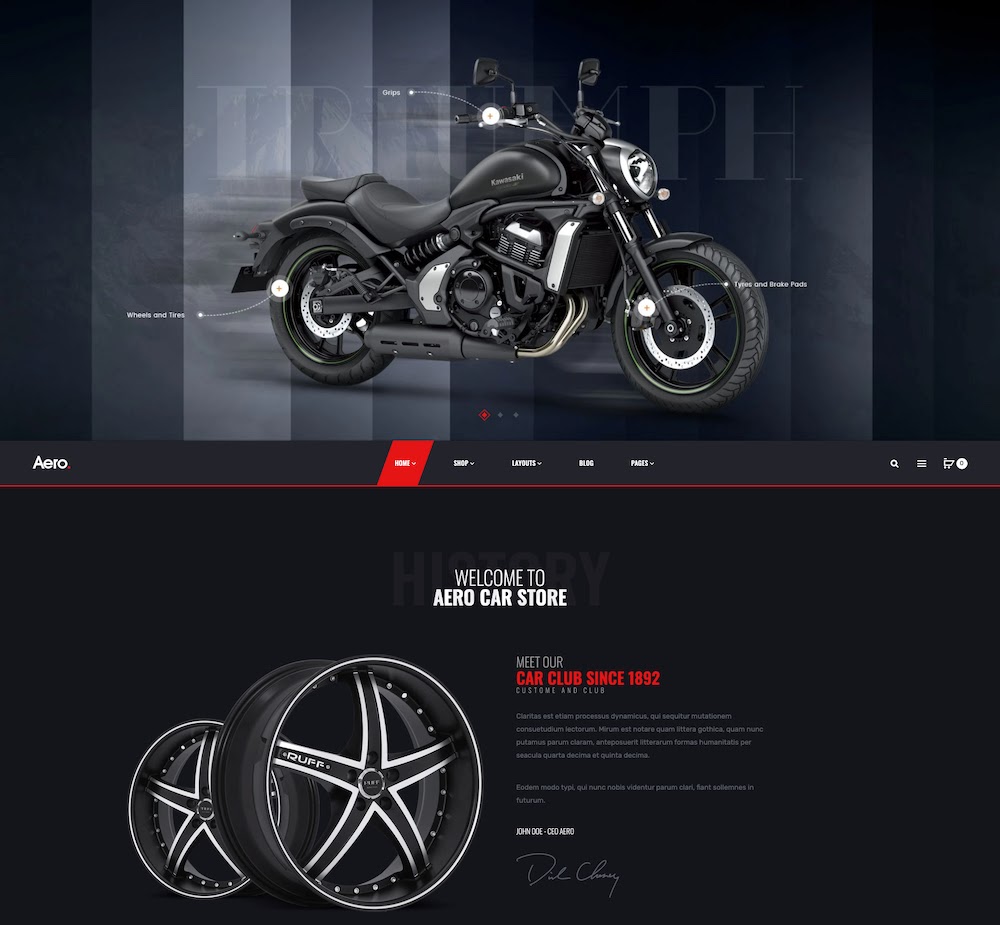
If you sell car parts, the Aero theme is a perfect fit. It has a modern and bold design that’s fully responsive. The theme has 10+ premade layouts and a mega menu that makes it easy to browse your store. Notable features include product slider module, Ajax add to cart, Ajax layered navigation, product quick view, and more.
DEMO / BUY THEME
Final Thoughts
As you can see, there is no shortage of amazing free and premium themes for Shopify. The only thing left to do now is to pick a theme that suits your style and get started with your Shopify store. Good luck! Be sure to check out our other Shopify articles while you’re at it.
Original Source: https://smashingmagazine.com/2021/08/open-source-icons/
It’s incredible to see people from all across the world putting all their love and lots of hours into something that they then release for free, for everybody to use. They help projects on a tight budget shine, without asking for anything in return — and, of course, they never cease to inspire.
In this post, we’ll celebrate some of these wonderful freebies that we came across recently. All of these free icons, illustrations, avatars, and animations have slightly different licenses (so please check them), but they are free to use in private and commercial work. But of course, the credit is always much appreciated.
If you’re interested in more goodies like these ones, please do take a look at our lovely email newsletter, so you can get tips like these delivered right into your inbox.
Open-Source Flag Icons
Icons are a fantastic way to help convey meaning and add some character to a design. An icon set that comes in particularly handy in e-commerce projects is Flagpack. It includes more than 250 open-source flag icons — from Andorra to Zimbabwe.

The Flagpack icons are optimized for small sizes which makes them a perfect fit for all your UI needs. They come with several predefined styles or you can customize the look to your liking, if you prefer. Two versions available: Designers can use the Flagpack in Figma and Sketch, developers can install it directly within their code project (React, Vue, and Svelte are supported). Nice!
Boring Avatars And Absurd Illustrations
Do you need some SVG-based avatars for your project? Boring Avatars has got you covered. But don’t let the name fool you: The avatars are anything but boring.
The tiny React library generates custom, SVG-based, round avatars from any username and color palette. Six different styles are available, abstract patterns just like friendly smileys. You can either choose a random color palette or create your own from scratch to tailor the avatars to your design. A friendly little detail.

Another fantastic resource with a name that might leave you puzzled for a moment are the Absurd Illustrations that Diana Valeanu created. Her series of illustrations combines absurdity and a deep sense of childishness and naivety to take every user on an individual journey through their imagination. A beautiful celebration of the imperfect that we’re sometimes missing in this digital era, absurdity that, well, makes sense.
Open-Source Health Icons
When people from all across the globe share the same vision and work together on one common goal, great things can happen. Things like the Health Icons project. The project is a volunteer effort to create a ‘global good’ for health projects all over the world. It includes more than 870 public-domain icons that can be used for free in any type of project.
![]()
Blood types, body parts and organs, diagnostics, medications, medical devices, vehicles, and people — the set covers everything health-related you could possibly ask for. Each icon comes in three different styles (outlined, filled, negative) and is available in SVG and PNG formats. There’s also a Figma plugin that makes it easy to find and include icons in your design.
Open-Source Life Science Icons
Vaccines, viruses, genetics, physiology, bioinformatics. These are just some of the topics that the fascinating Bioicons set that Simon Duerr created covers. In total, you’ll find 1,700 open-source life science illustrations in the set — easily searchable and filterable, of course.

The site supports two modes: you can copy the icons as SVG into the clipboard and paste them directly into Illustrator to change colors or delete parts. Alternatively, you can download the SVG to use it on the web, in graphics software, and even Microsoft Office products. An encyclopedia-like set — if you don’t find what you’re looking for there, you probably won’t find it anywhere.
Weather-Themed Icons And CSS
222 weather-themed icons, complete with 28 moon phases, the Beaufort wind force scale, and maritime wind warnings — that’s what you’ll get in the free Weather Icons set that Erik Flowers created.

You can copy and paste the icons into your favorite design app right from the site. CSS makes it easy to style and customize the icons just like you would do with text, so feel free to change their color, add shadows, or scale, rotate, or flip them to make the icons fit into your design nicely. Popular weather API classes are also supported, by the way, in case you should need it.
Summer And Tourism Icons
Barbecues, a trip to the beach, exploring a new city — summer is the time to make memories. To bring some of the summer feeling into your projects, you might want to take a look at the Summer Time and Tourism icon sets which the folks at Design Zone offer for free download. Each set includes 20 vector icons (in colored and linear versions) and comes in AI, EPS, and PNG formats. You can use the icons for both personal and commercial projects. Happy summer!

Flat Illustrations With Character
No more boring business websites! The Flat Illustrations set that Getillustrations.com offers is bound to add some personality to your project. It features free compositions for businesses, online stores, and marketing. Characters in various poses and scenes, colorful, relaxed, and friendly.

The site features ever-changing free sets (link attribution is required), and also the commercial versions come with customizable vectors for Figma, Sketch, Ai, SVG, AdobeXD, and Iconjar. Good vibes guaranteed!
A World Of Open-Source Icons
What started as a semester project by Interaction and Communication Design students, has grown to a comprehensive open-source emoji and icon library: OpenMoji. Almost 4,000 icons have been carefully designed and reviewed for the project, ranging from UX and technology-themed emojis to animals, nature, food, people, activities, places, and much more. The icons are available in colored as well as outlined versions in SVG and PNG formats.

Hand-Curated Mesh Gradients
Beautiful gradients? Yes, please! If you don’t have the time to create them yourself or are looking for some fresh inspiration, Gene Maryushenko’s hand-curated collection of mesh gradients is sure to have you covered.

Unhappy with what he found online, Gene created 100 gradients that will make your site stand out, without being loud. The gradients can be downloaded for free as JPEGs. CSS and SVG will be added later. Enjoy!
Open Peeps
584,688 possible combinations. That’s the number of different characters you could create with Pablo Stanley’s hand-drawn illustration library Open Peeps.

Open Peeps lets you mix and match different vector elements to create diverse personalities: combine clothing and hairstyles, change emotion with facial expressions, set the scene with different poses — the possibilities are sheer endless. And if you’re in a hurry, Pablo also prepared some ready-to-download Peeps that you can use right away. A great way to add a handmade touch to your design.
Free Vector Illustrations
A cow kidnapped by aliens, a dropped ice cream cone with a sad face, the Lochness monster emerging from the water. These are some of the fun error state animations that the folks at Pixel True Studios offer for free download in their set of vector illustrations and animations.
![]()
Apart from error state animations, the set includes more than 500 illustrations, icons, and animations to depict everything a web project could call for: backgrounds, emoji, avatars, and more. The illustrations are available in SVG, PNG, AI, Sketch, and Figma, the animations are made with Lottie. A great way to add a fun and friendly touch to a design.
Thank You!
A huge thank-you to the creative minds who designed these freebies — and of course to everyone who gives back to the community in one sense or another. The web wouldn’t be the same without you. ❤️
